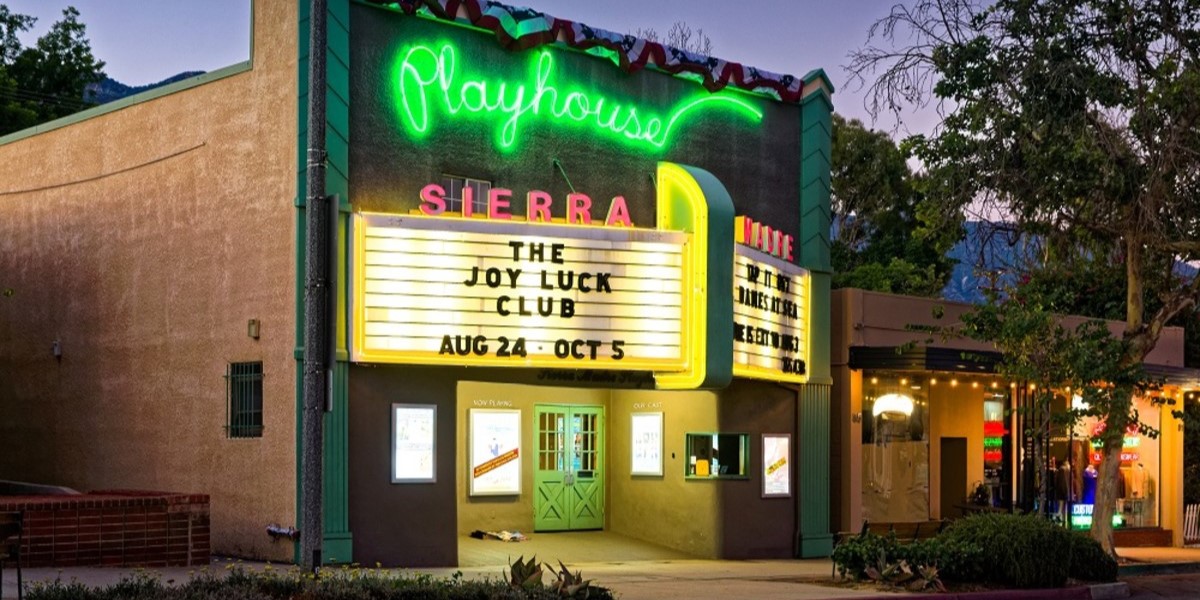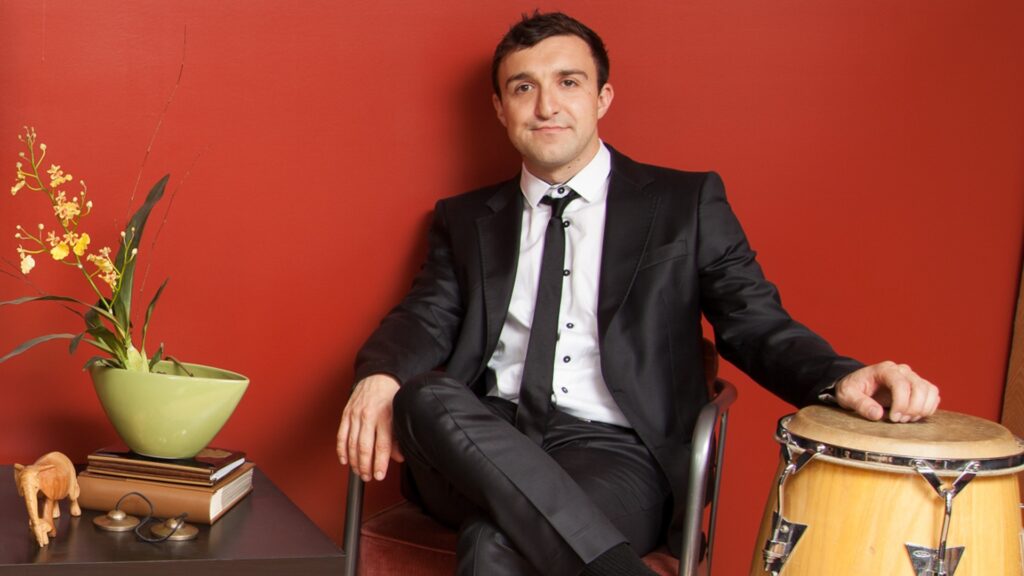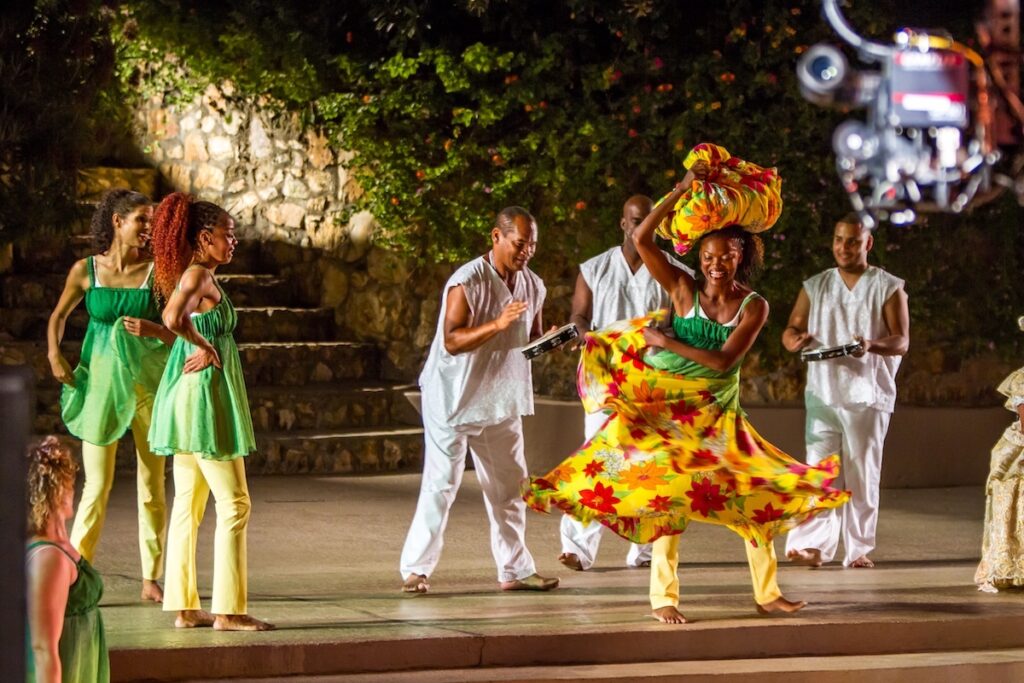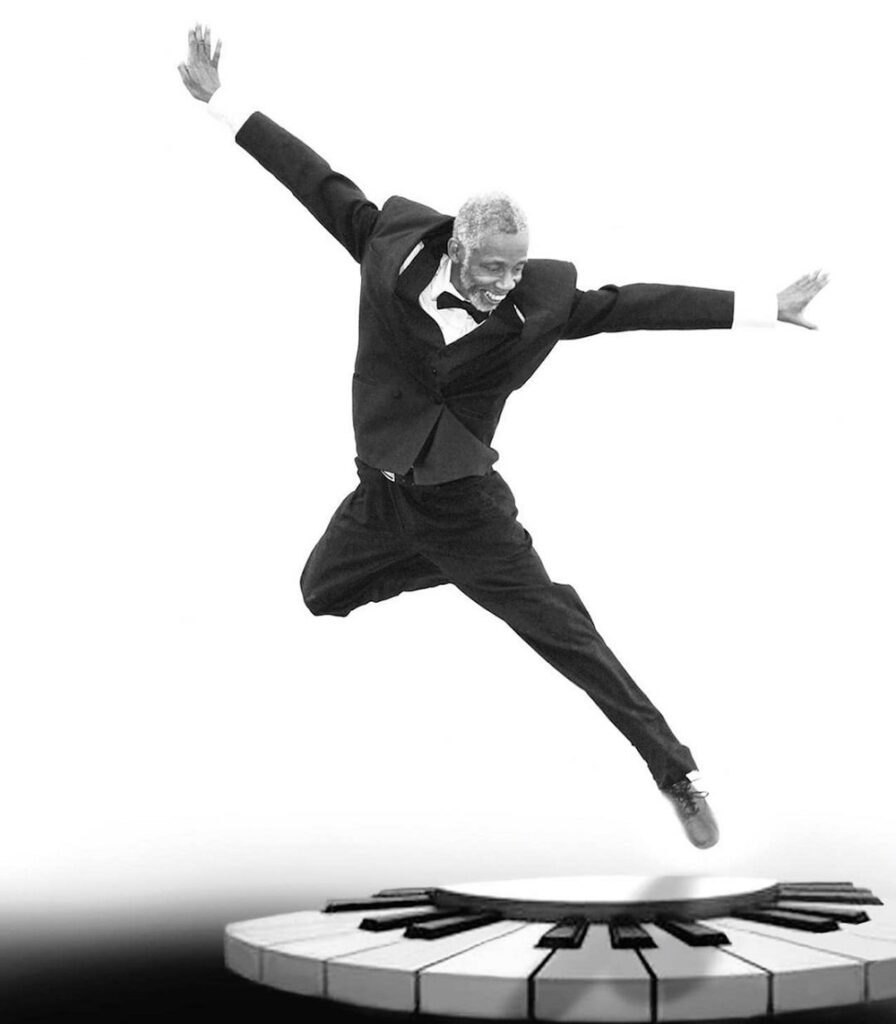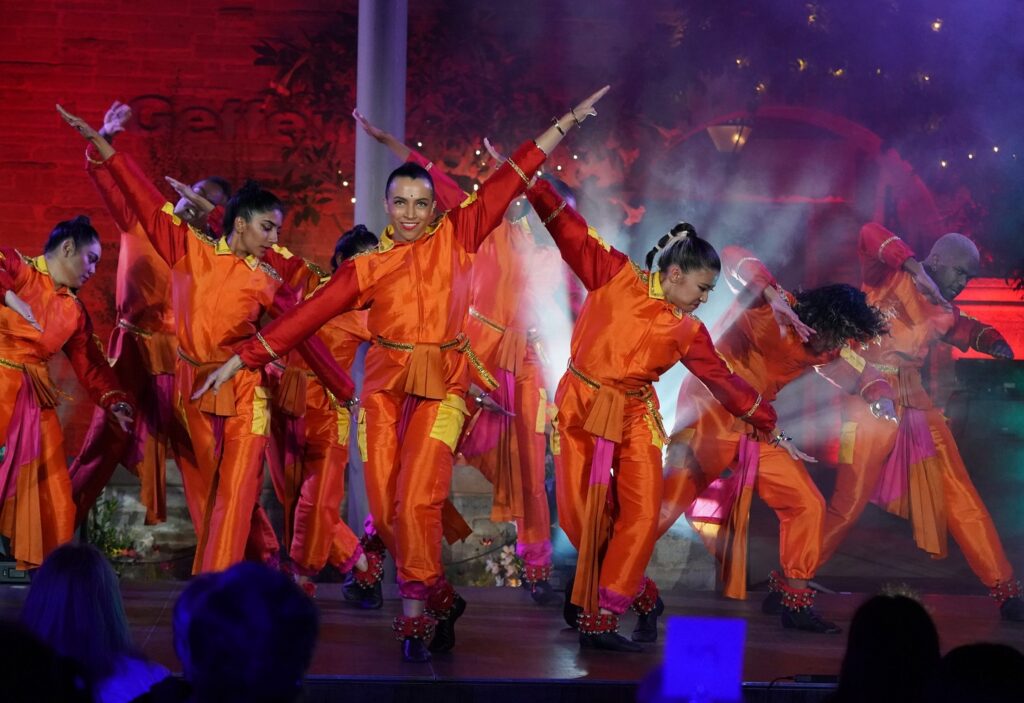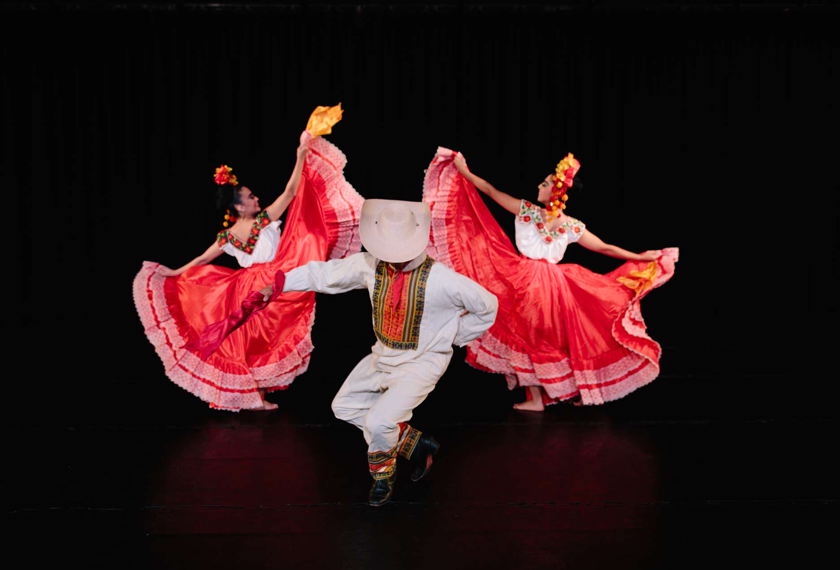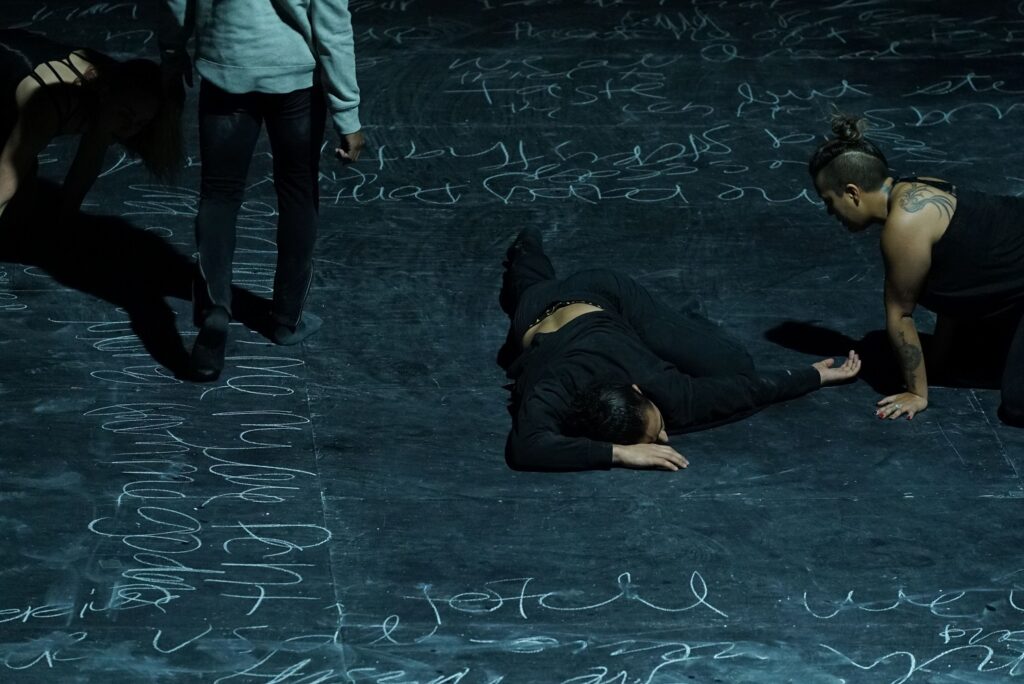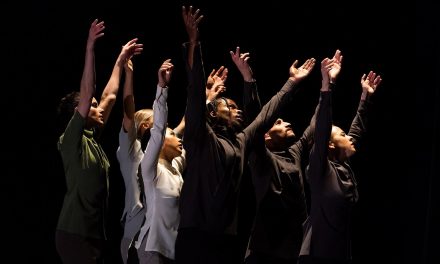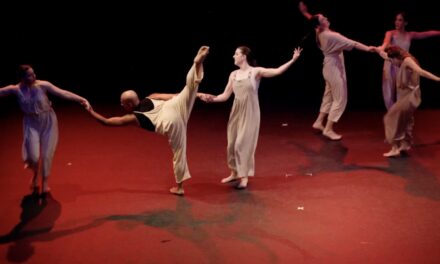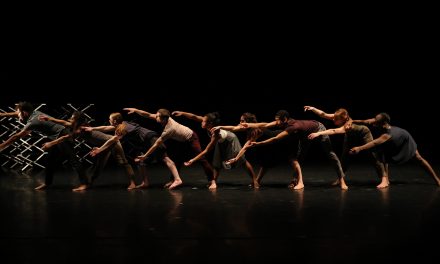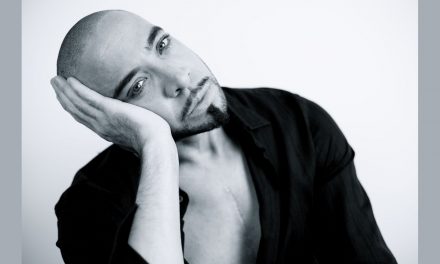A checkered career distinguished him from the other contenders. Now, 18 months after Matt Cook’s selection as the new artistic director of the Sierra Madre Playhouse, that background has fit like a glove with the historic theater’s ambitions to expand beyond its traditional theater offerings to be a destination for a range of exceptional performing arts, including dance. This season, the theater introduced its first dance season with seven top tier LA-based companies across the dance spectrum, along with partnerships that expand its offerings in jazz, chamber music, comedy, film, and theater.
A grammy-award winning percussionist and respected arts administrator, Cook’s SoCal credentials range from contemporary music’s Wild Up, the experimental Long Beach Opera, and the Bollywood/contemporary dance company Blue 13, among others, as well as internationally recognized dance including Martha Graham Dance Company and the Akram Khan Company. Those deep SoCal performance connections already have produced impressive partnerships, most recently with East West Players for a critically acclaimed and sold out production of Master Class, directed by Tim Dang.
The upcoming dance series includes Blue13 (April 12), tapper Chester Whitmore with live jazz from Del Atkins + Band (April 27), Kayamanan Ng Lahi Philippine Folk Arts (May 17), Steven Atwater + Thomas Ford (May 17-18), Pacífico Dance Company (June 14), Yamini Kalluri with violinist Vijay Gupta (June 21), Rosanna Gamson/WorldWide (June 28-29), d. Sabela grimes (Sept. 6), and Viver Brasil (Oct. 17-18).
Dance writer Ann Haskins recently spoke with Cook about how his background shaped the high caliber dance season on the Sierra Madre Playhouse stage, how the repeated sold-out shows are fueling the theater’s expansion plans, curating this first dance season, and the groundwork propelling future dance and other programming. (The interview has been edited for clarity.)
Haskins: Thank you for taking time to talk with me. Please talk about your plan coming in as artistic director.
Cook: The plan for the first year, actually for the first two years, was to build the blueprint of what our future will be. That blueprint involves bringing in new people for many different art forms and bringing new people to the building. So, we produced at a small scale with what we hope to grow into, and it’s been working. As you probably know, the building is historic. It started out in the 1900’s as a furniture store. Then in 1924, it became a cinema, then became different configurations of the playhouse it has been ever since. Last year, we received official designation as a historically significant building. We’ve been around a long time. The local community knows and supports us for theater. Expanding that support, ushering in new patrons is step one, and showing that there’s something here for everyone.
Haskins: How is it going?
Cook: It’s going quite well. We welcomed about 16,000 people last year. With a 100-seat theater, we’re selling out most shows and attracting new audiences for a variety of programs. When I came our budget was just under $500,000. Now, 17 months later, we’re up to $1.5 million per year. We’ve tripled the budget in roughly a year, and everything that comes in goes out. It’s not like we have a surplus, but what we’re doing is raising more money and getting more money through ticket sales, and everything is reinvested into the Playhouse. Our balance is pretty much break-even. That helped as we’re doing a lot of work teaching the community about what we have and increasing awareness. Also, we’ve been learning how to find the dance community, how to present dance, and how to build momentum around this genre. Those are the same things we’re doing with jazz. How do we find a jazz audience? And then once we do that, what threads do we have between jazz and dance or plays and dance or classical music and jazz? We’re trying to build webs in the community, and that will lead to a sustainable future.
Haskins: What are the lessons so far?
Cook: What we’re learning is audience expectation. So when someone comes to a standup comedy event, what do they expect it to feel like? What do they expect their evening to be? And that’s so much different than a Baroque music concert. What can we do to make a concert going experience in line with an experience in a larger theater? So that’s the idea. We want to have intimate versions of world class artists at accessible prices, and the only way we can do that is if we feel world class. That is something we’re learning with a dance now too. Dance is a unique genre, because it can be many things. Especially contemporary dance can be so many things. This year is the first year we’re taking a real stab at it, curating seven companies plus two family dance events. This is very much a learning year on all accounts.
Haskins: How did you put your dance series together? How much was based on connections you made before you came to the Playhouse.
Cook: When I took on this role, even from the beginning, I intended this would be a house for dance on this side of the county. One obvious connection from before I came to the playhouse is Blue 13 which I have supported over the last five or six years. During COVID, I helped them with grant writing on top of my work running an opera company, and then I was their interim director for a few months to help refine their internal practices. I’ve always been invested in the dance community as a fan, and then I became deeply into dance when I was trying to help Blue13. I also made a lot of friends along the way who helped point me in the right direction. I’m a musician. I trained and spent many years in the performance sector. I’ve seen thousands of concerts, including dance concerts, but I realize that there are many things that I don’t know. I have experience, but there are people that have more, so I’m relying on them to send me materials and things they’re interested in. One of my friends that has helped a lot in curating dance is Sasha Anawalt. She’s a really dear friend of mine who was an editor at the Herald Examiner and also directed the USC Annenberg journalism program. Sasha supported Wild Out years ago when I was working with that musical group. I asked Sasha and some others who have a deep perspective on our dance scene. She gave me a list of 15 choreographers and sent me videos, and said ‘go look at these people.” From her list, from what I picked up in my experience, and from some other recommendations, I curated the first of what will be many seasons of dance.
Haskins: Tell me about Blue13 and its two shows.
Cook: Blue 13 is bringing a mixed rep show of things that they’ve created over the last few years. Some of the pieces they’re going to perform here, they performed at the Ford and others they performed at the Wallis two years ago. It will be interesting to see how it works on our stage. We have a very big stage for the size of building, but maybe one-third smaller than the Ford Amphitheater. They are rehearsing right now and then have a week of tech. Each dance company will have a full week of tech.
Haskins: Is there a common thread in the dance you picked?
Cook: This year is pretty diverse in terms of what styles of dance. Still, I think most of them, even the folkloric Pacifico Dance Company, for example, would identify as a contemporary dance company who uses vocabulary from modern dance, ballet, or cultural dance. This is all concert dance. That is something I learned with Blue 13; how a choreographer uses their various dance vocabularies that draw from experiences that they had, just like classical composers find jazz seeps into their music. And Blue 13 is a really good example, because they’re a contemporary dance company, but there’s no getting away from all the beautiful South Asian dance vocabulary that the artistic director Achinta McDaniel learned when she was young.
Haskins: Did your background in music and as a percussionist come into your approach to the dance series?
Cook: What I can appreciate about the through line between what I grew up performing percussion and dance is that dance really is the most human art form imaginable and truly transcends language. Drums are very similar. The history of drums way predates the Bible. There’s just this raw humanistic quality of both percussion and dance that has always captivated me. And just seeing dance, seeing what the human body can do, and how to tell stories without words yet understand emotion is breathtaking for me. Because I’m not a dancer, I’m a little less jaded. I really appreciate what I see.
Haskins: One of the things that I hear when I talk to choreographers is the lack of venues for dance, especially for LA-based dance companies. Are you hearing from dance companies who want to be included in the future?
Cook: Absolutely. There’s already momentum for what our future will be. I can’t speak from years of experience as a dance presenter here, but I’ve noticed a void for presenting Los Angeles dance as a series. There are wonderful presenters in town but the majority of the calendars that I’ve noticed present touring dance companies from New York. In terms of Los Angeles dance presenters, there’s not a lot, especially on this side of town. I was excited to see what the Wallis in Beverly Hills is doing this year. I think they’ve really taken a step to commit to Los Angeles artists, which is something that I want to do here. I feel like we are the perfect venue to be the dance venue on this side of town. My goal is to curate the most prominent Los Angeles dance makers that normally have to travel, but it’s going to take a couple years to get to that place. Philanthropy in the dance sector is not nearly as active as it is in something like opera. Part of what I saw with Blue13 and other non-profit dance companies is you’re not going to have donors unless you present a lot locally, work that can be seen by local dance patrons and philanthropists. That doesn’t happen when the lack of local performance opportunity means a company has to be on the road to keep dancing. What we’re hoping to do is offer companies as frequent performances as possible. This year. We can only do seven, because we’ve never done it and it’s a huge risk financially. I’m hoping this is the beginning of what will be a very active dance space. And because I’m an artist, we’re trying to be very artist friendly. We’re sharing the door list, helping create opportunities for the patrons to interact with the dancers after the show, trying to have a champagne toast after each performance, and really trying to create a social element as a dance hub. But again, we’re brand new. It’s going to take some time to grow into what we know it will be.
Haskins: The playhouse has 100 seats. That doesn’t seem enough for the planned growth when you are already selling out.
Cook: That’s why there is a capital plan to expand to 175 seats. The building has that capacity. There are newspapers from the late 1930s that say the cinema added a balcony, going from 800 to 1200 seats. The building has the bones to extend back into the lobby, which also means earthquake, ADA, and other retrofitting. A capital campaign for the project will launch in 2026, and break ground in 2027, hopefully in phases, so we don’t have to take a full year off. It is already in process. We’ve raised enough to redo all of the air filtration systems to start. 100 seats is not a sustainable business model. 175 seats will put us in a position to be sustainable for producing world class art and keeping it affordable. With 99 seats, we cannot break even unless we want to charge $100 tickets. Thanks to help from generous philanthropists and foundations, we can keep the tickets affordable and take that loss while we build momentum, but we need a sustainable business model. Getting to 175 seats will put us in that sweet spot.
Haskins: Before we end, I have to ask about how the Playhouse fared with the fires. Sierra Madre is right next to Altadena and the Eaton fire.
Cook: It’s been a mess. We’re still standing, but the fire came about ten blocks away from the Playhouse. There are pictures online of the fire behind the Playhouse. We had roof damage, about $6,000, which was salvageable. So far we have confirmed that 300 of our regular patrons lost their homes. We reached out to all them and are helping them directly. But it’s just, you can imagine what a loss that is. Also, many of our local foundation funders have pivoted their efforts to fire relief funds and are not supporting the arts at the moment. Overall, this is a speed bump for us that could have been devastating like it has been for so many people. Even though it’s been a turbulent year, I’m grateful that we are able to function. We still have a building. We still have a series.
Blue13 Dance Company at Sierra Madre Playhouse, 87 W. Sierra Madre Blvd., Sierra Madre; Sat., April 12, 2 & 7:30 pm, $12-$35. Calendar | Sierra Madre Playhouse.
Written by Ann Haskins for LA Dance Chronicle.
Featured image: Sierra Madre Playhouse – Photo by Ken Fung.

